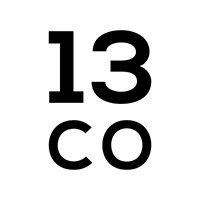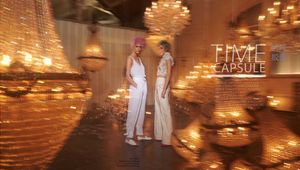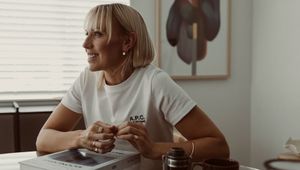
Into the Library with Hamish Macgregor

“I was kind of self taught,” says Hamish Macgregor when I ask him how he became a director.
“I studied marketing and journalism in Tassie. I had the aspirations of either being a journalist or, you know, making ads for fun. But, really, journalism was where my head was at. And it wasn't until the very last subject that I did at university, broadcast journalism, where things really fell into place. Our lecturer was a retired war journalist, who had all these very haggard stories, and I'm 90% sure he was drunk most of the time. He just gave us a camera and his final cut pro, and said, ‘Go, find a story and make it interesting’. Something clicked for me then,” says the 13Co director.
His directorial career grew from that broadcast journalism module into self-advertised videography services. “I started calling myself a filmmaker and approaching cafes and stuff like that and saying, ‘Hey, can I make you a video for free?’”
Now, he’s become one of the hottest young directors working with 13Co, with several slick and entertaining works under his belt.
“I’m a big PTA fanboy. I love Bong Joon H. And I love the Daniels. I thought Everything Everywhere All At Once was just a visual masterpiece.”
Hamish’s optimism and enthusiasm shines through in his personality, and imbues his works with a sense of joyous authenticity. We take a look at six of them.
Currency Fair
Explore this work and its credits in our creative library
“Sinead, you know, she's lived in Australia for a while. And I think Currency is an Irish business. But she’s obviously a big star over there. And somewhat, you know, famous in Australia in the marathon scene.
“We tried to incorporate a lot of Michael Bay type shots - things with a parallax crossing the frame, a real sense of dynamism.
“A good deal of this was running and gunning really - we didn’t have access to a crane arm or anything extravagant like that. It was a pretty simple, straightforward case of trying to find a nice space, a wide lens, and just going for it.”
Puma
Explore this work and its credits in our creative library
“This is aesthetically pretty similar to the Currency Fair spot. I worked with the same cinematographer, Marcus Cropp, on both, and they both focus on sports and exercise. But that one was always designed to be a sort of display of momentum, while this one…the original idea was to do it almost as a Western. The montage, with all those match-cuts, would create the impression of somebody starting out far away from the lens and then coming in, closer and closer, and eventually you get to know this character.
“The idea was to create a type of person that worked as one character even as if it was many people. You know, these people are anonymous. They don’t do it for the glory. It could be you. It could be me, it could be anybody. So we wanted to bring them together and make it feel like they are all driven by the same purpose. They're all the same person.”
Atomos
Explore this work and its credits in our creative library
“First brief was, here's a product that can be seven different things. And we want to show it off in an interesting way with interesting characters. That was it.
“I just sat with that description and tried to find the most interesting possible examples of each possible version of the product.
“There’s a hell of a lot of match-cuts and complicated camera moves here. Everything was pre-planned. It was all storyboarded, all previs-ed. The cinematographer, Max Walter, and myself, made all these little transition gifs to show how everything was going to work. It was the same with the colour - we wanted each location to have a different colour palette so you could see clearly how each location was different.”
Worksafe
Explore this work and its credits in our creative library
“This, obviously, exists on the total opposite end of the aesthetic spectrum. It needed to look sad. I just wanted to make it feel very stagnant, precise, and omniscient. David Fincher was a big influence here - people always talk about how his camera is cold and omniscient.
“I always wanted to feel like the camera was foreboding, like it was saying that something was about to happen. So things are always centre-framed, especially when we're in the moments where people are dying. And then when we are with the family members, the camera's still totally locked off. It just feels like dead, like there's no life in that frame at all.”
Momentum
Explore this work and its credits in our creative library
“Momentum is an energy company, but something of a smaller player. They wanted an ad which stood out, so that’s what I tried to give them.
“The basic gist was always going to be about a person making the best of a bad situation - choosing happiness, in short.
“Originally, the script called for this to be set on a train station, and to have someone miss a train. But as soon as we started looking into that, we realised that it was just asking for complications. So the whole experience of trying to find somewhere to replace that was a real demonstration of how much directing is about the basic, simple act of solving problems.”
Bowerbird
Explore this work and its credits in our creative library
“It ended up being a bit of a balancing act. There were versions in the edit which were extremely pessimistic, while the original script was probably more comedic. I had to find the right balance of tones. I wanted to withdraw from this idea that Joe, the main character, was a bad person. So it became a much different film to what it was originally intended. We actually took out whole scenes and left more up to the understanding of the viewer, so that it wasn't as prescriptive with the morality of the main character.










